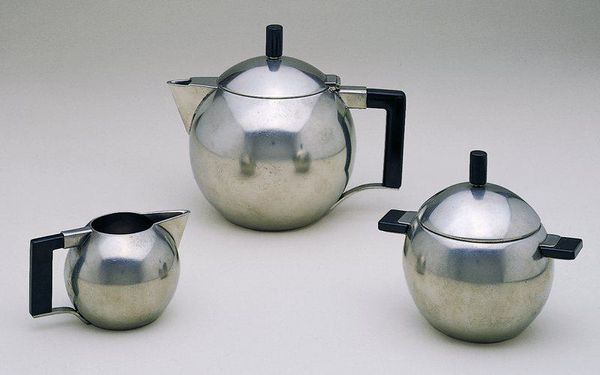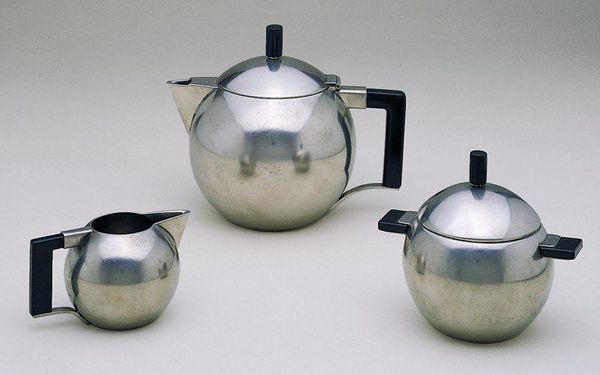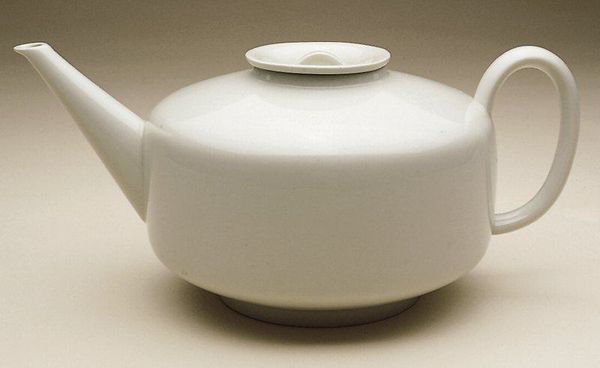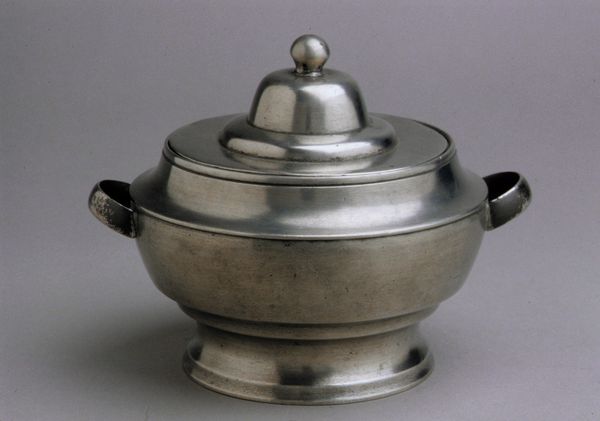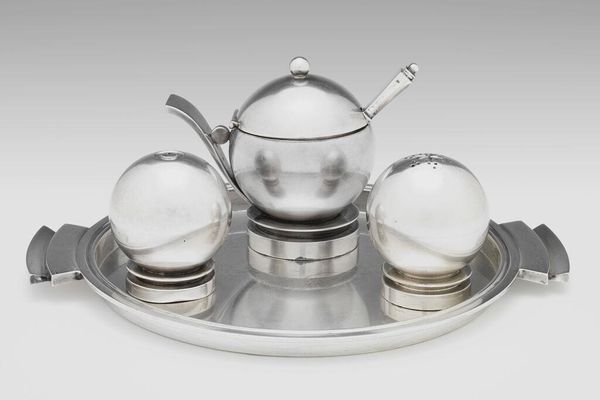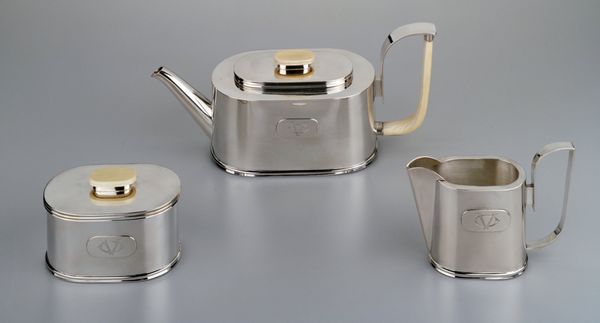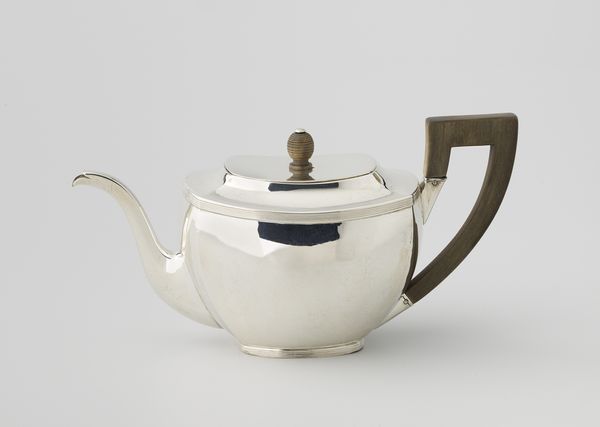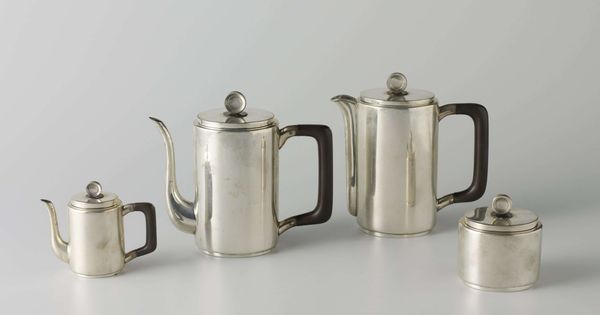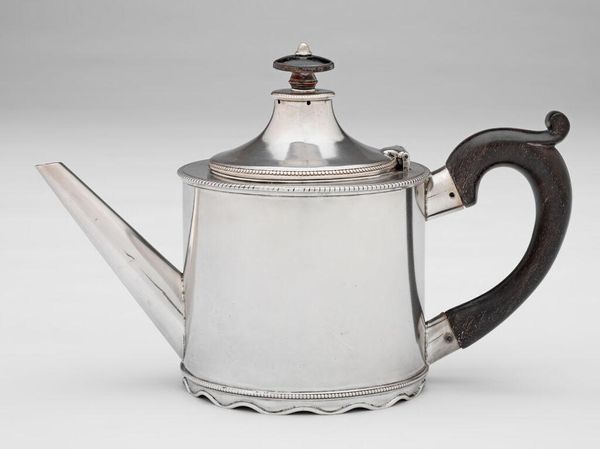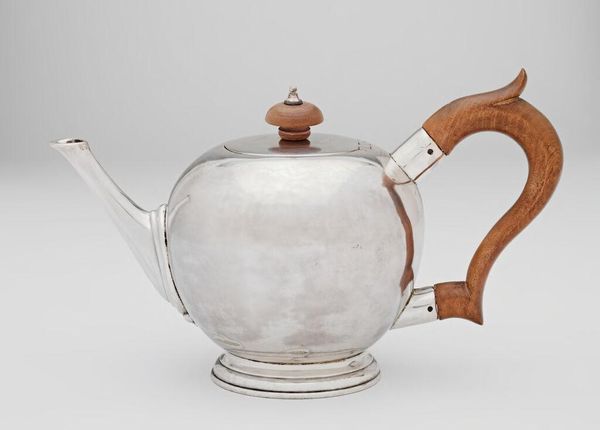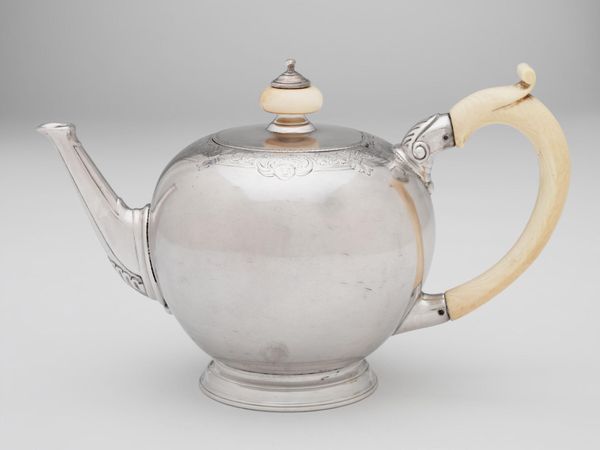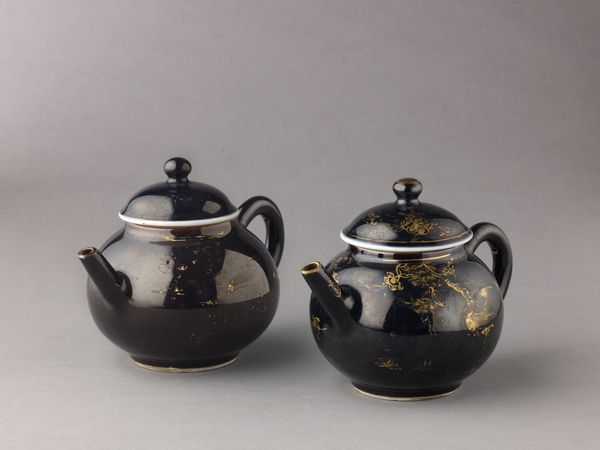
metal, photography
#
art-deco
#
metal
#
photography
#
ceramic
#
decorative-art
Dimensions: 6 x 7 1/4 x 5in. (15.2 x 18.4 x 12.7cm)
Copyright: No Known Copyright
This is a teapot from a tea service by Theodore Hooft, made in the mid-20th century, and it's all about simplicity and precision. What's interesting is the way Hooft embraces the material, stainless steel, letting its inherent qualities shine. There's no attempt to disguise or embellish. The forms are basic – spheres and cylinders, with sharp, angular handles providing a contrast. The surface is smooth but not overly polished, retaining a subtle texture that hints at the process of its making. It reminds me of Bauhaus design principles, where function dictates form, and beauty is found in the purity of line and material. The reflections on the surface create a sense of movement, subtly animating the static object. You could see a similar sensibility in the work of designers like Marianne Brandt, who also explored the expressive possibilities of industrial materials. It's a conversation across time, each artist and designer building on the ideas of those who came before.
Comments
minneapolisinstituteofart almost 2 years ago
⋮
The stark planar elements introduced by Gerrit Rietveld and members of the de Stijl movement (1919-1928) found their way into the work of several metalworkers. Inspired by a rational, intellectural approach to design, Hooft preferred simplified form, proportion and clarity. The unadorned, dull patina and squared-off handles of this tea set were produced at minimal cost: stylistic purity on a shoestring budget aimed at a deflated market. Few sets were produced, finding little favor with a public still preferring Empire and rococo-inspired designs.
Join the conversation
Join millions of artists and users on Artera today and experience the ultimate creative platform.
